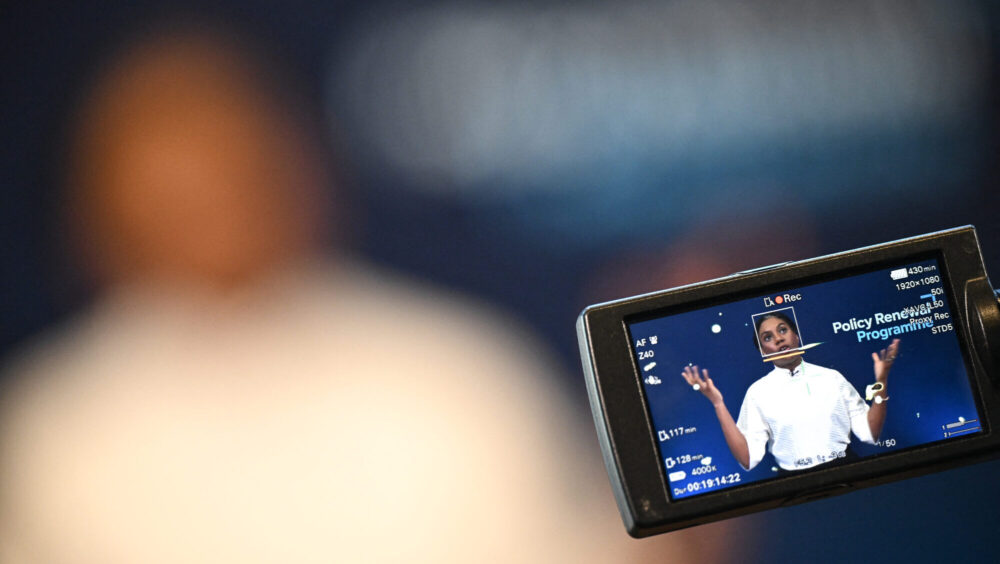Mary (2024), Directed by Daniel J Caruso Jr., Melodrama Productions
Conclave (2024), Directed by Edward Berger, Indian Paintbrush Productions
Two recent films, Daniel J Caruso Jr.’s Mary and Edward Berger’s Conclave, should concern all Christians, especially Catholics. Mary portrays a religious theme, the annunciation and virgin birth of Jesus, while Conclave portrays a religious procedure, the election of a new pope. Mary aims, but fails miserably, to pay tribute to its main character with the aim of moving people closer to believing the Gospels. Conclave aims to undermine the traditional element of the Catholic Church and, largely, succeeds.
Mary is the brainchild of its director, Daniel J Caruso Jr., a Roman Catholic. His personal faith is not in doubt, as an interview in the National Catholic Register shows. He says The Rosary daily and his family leads a Catholic Christian life. In the interview, Caruso confirms that his aim was to promote the Virgin Mary to his audience. He hoped that “…people watch the movie and they feel much closer to Mary.”
Undoubtedly the aim of making people feel closer to Mary is worthy, but it is questionable whether trying to take a cinematic shortcut is even feasible. Other than those to whom the Virgin Mary has appeared in visions, usually innocent children, the tried and tested way of approaching and achieving proximity to Mary the Mother of God is prayer, regular and repeated.
In an extraordinary statement, Caruso says: “I wanted to make her human and relatable so that people would embrace her and even love her more than they do.” Whether anyone who is already devoted to Mary will be moved closer by making her ‘relatable’ is doubtful. Witness what has happened to the Catholic Church since it became more relatable following the ravages of Vatican II. It is all very well being relatable but to what end, if the churches, many already largely empty, are closing down? Similarly, making the Virgin Mary more relatable may only detract from her unique status in the hierarchy of Heaven.
Caruso’s good intentions fall flat in the execution of the film. It is riddled with inaccuracies and anachronisms. Caruso fills the gaps in Mary’s pre-biblical life with speculative storytelling that borders on absurdity. Familiar biblical events are shoehorned into the narrative, including Herod demanding someone’s head on a plate (at the time, St John the Baptist had not even been conceived). Mary’s father encounters the angel Gabriel, oddly depicted as a tattooed figure resembling a backstreet dealer, who announces Mary’s birth to him. At the time, he was engaged on a 40-day desert journey which, biblically, was the prerogative of Jesus at the start of his ministry. Mary is also tempted by Satan in a gratuitous comparison to the temptation of Christ.
It must be said that the depiction of Mary, played by the unknown but astonishingly beautiful Noa Cohen, is sympathetic. She is demure and obedient. But the depiction of Joseph verges on the ridiculous, strewn as it is with inaccuracies regarding how Joseph decides to marry Mary despite her pre-marital pregnancy. Joseph, according to the Gospels, was directed by an angel not to break his betrothal to Mary which would have risked her being stoned to death. But Caruso’s Joseph is inexplicably a brawler, rescuing Mary from being stoned and fighting off the zealots who planned to stone her, adding unnecessary melodrama to a sacred story. It is not as if there was not a book on which the narrative could have been based.
Caruso’s excuse for his depiction of Joseph is that his close friend Bishop David O’Connell requested it, saying of Joseph: “He doesn’t have a voice in any of the Scriptures, and he’s such a pivotal figure. He is the unsung hero of the Gospel, and he doesn’t get any love because he doesn’t say anything.” Perhaps Bishop O’Connell finds the Bible lacking in how the story of the birth of Jesus is depicted and may be unaware of the considerable devotion that is aimed at St. Joseph as a father and a worker. It is Joseph’s humility, quiet care for Mary, and his silence in the Gospels that make him such an appealing figure.
The Nativity sequence takes even greater liberties, turning Mary and Joseph’s journey to Bethlehem into a violent escape with much bloodshed along the way. There is no room at the inn in Bethlehem, not due to the census that had been called by King Herod but because people were gathered to witness the birth of the Messiah. Following the birth of Jesus, they make a further bloody escape culminating with their flight on horseback through burning buildings. There are no donkeys in the film.
Such fabrications stray far from the biblical account, raising the question: why not adhere to the original story? Even Herod’s expectations regarding the Slaughter of The Innocents are altered with, frankly, comedic results. The zealots plotting against Rome who consider Herod a liberal are truly reminiscent of the People’s Front of Judea in Monty Python’s Life of Brian.
The film’s finale, with costumes and scenery reminiscent of a Star Wars movie in the Temple in Jerusalem, further vandalises the Biblical narrative. Despite Caruso’s stated intent to honour the Virgin Mary, his efforts result in a film that fails to respect its source material.
It appears that Mary gets its just desserts in terms of ratings. On Rotten Tomatoes, it earns only 29% positive reviews. This was not as poor as the ratings given to Mel Gibson’s Crucifixion which earned only 6% positive reviews. Compare that with the box office success of Conclave which has already netted $75 million worldwide, scoring 93% positive reviews on Rotten Tomatoes and is in line for 12 BAFTA awards.
Conclave, with a screenplay by Peter Straughan, is based on the 2016 novel of the same name by Robert Harris. While not a Catholic, and being non-committal about having a faith, Harris does declare his admiration for Pope Francis in an interview in The Catholic Herald, conducted at the time of publishing Conclave. The present Pope’s liberal leanings are well-known and expressed through such actions as the appointment of liberal bishops and the ousting of conservatives. The Catholic Herald has already panned Conclave in a review by Thomas Edwards based on its pro-liberal slant.
Conclave focuses on the inner workings of the Vatican during the election of a new pope. With an all-star cast led by Ralph Fiennes, the film provides an atmospheric depiction of the papal election process.
The story begins with the death of the incumbent pope and the declaration of sede vacante, or ‘vacant seat,’ as the cardinals convene to elect his successor. The film is visually dark, with much of the action confined to the Vatican’s secretive chambers. Fiennes’s Cardinal Thomas Lawrence assures his peers he has no ambitions for the papacy while subtly influencing the proceedings. Moments of intrigue, coupled with glimpses of the cardinals in bright cloisters, provide visual relief.
While the film portrays the conclave’s procedures with verisimilitude, its underlying message is clear: the Catholic Church must remain progressive, avoiding a return to pre-Vatican II conservatism. Traditionalists are depicted as power-hungry and eccentric, while progressives appear pragmatic and sane. The portrayal reflects a broader commentary on the Church’s struggle to remain relevant amidst declining Mass attendance.
While Mary fails to do justice to its biblical roots, Conclave offers a compelling, albeit critical, exploration of Vatican politics. Both films highlight the challenges of depicting faith and religion in modern cinema. Yet, their reception diverges significantly: Conclave captivates with its star power and intrigue, while Mary falters under the weight of its inaccuracies and over-dramatization.
In a time when religious storytelling faces scrutiny, these films remind us of the importance of respecting the sacred narratives they seek to portray. Whether as a Catholic or a casual viewer, one is left pondering the line between artistic license and misrepresentation.




